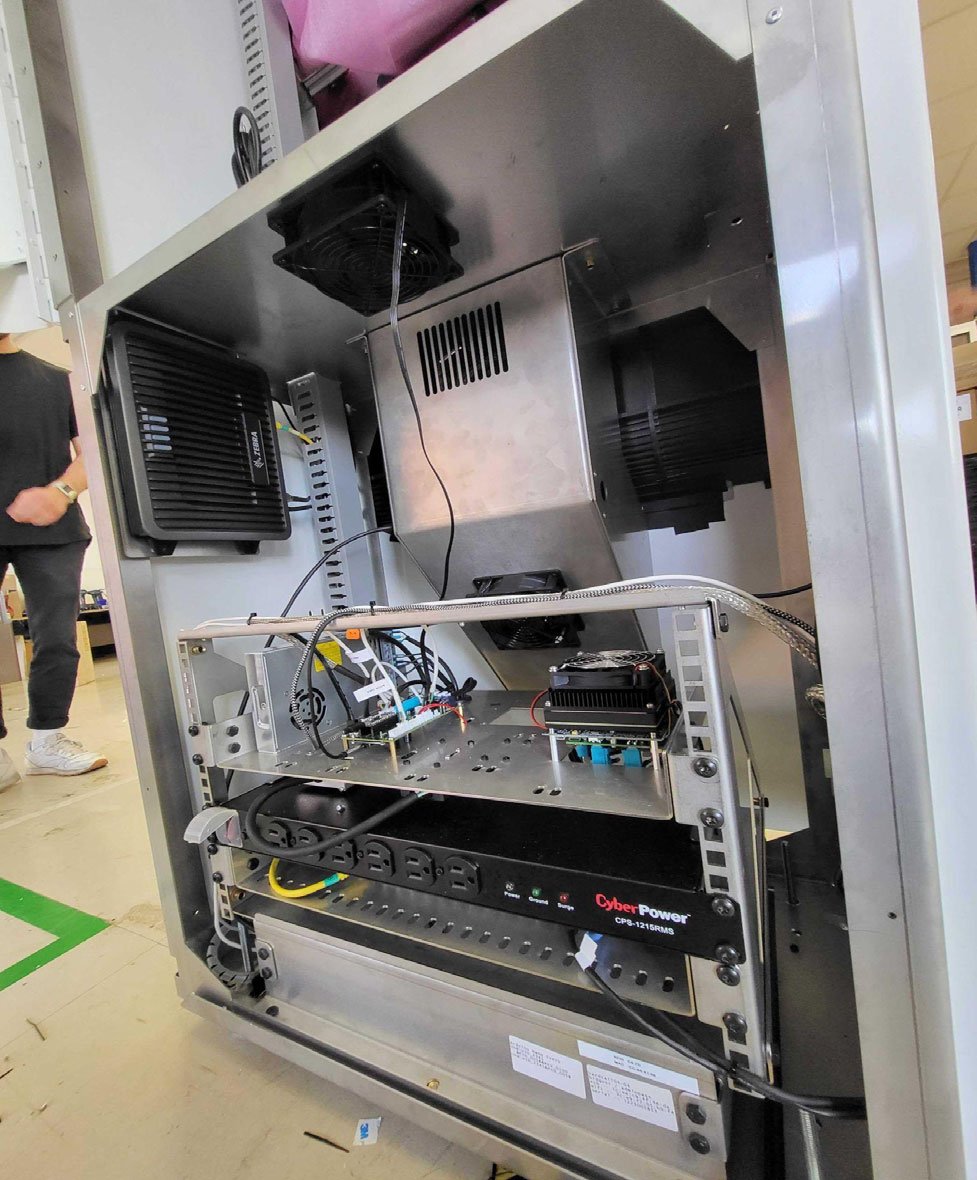Computer Vision POS System
-
What is it?
A point of sale (POS) system that uses computer vision to catalog the contents of the customer’s shopping cart, expedite the checkout process, and reduce revenue lost to theft.
-
The Ask
Given a rough CAD model and a list of critical camera placements, design a POS system that could be economically produced to outfit several retail locations. Build the physical architecture to test a new application for computer vision. Execute several rounds of prototypes separated by testing phases.
-
The Build
My team and I started with CAD models provided by the client and designed manufacturable enclosures that were robust and polished enough to be used by customers in a retail environment. At different times I was responsible for the overall mechanical design, camera positioning, and electronics fixturing.
We realized early in the project that it would be economical to build a generic electronics assembly to power the different form factors that the client requested. This module was flexible in its affordance of new electronic components.
An exciting challenge we often faced was to optimize camera placement without altering the footprint of the design. This involved a tight and rapid loop of micro-adjustment and testing.
The builds needed to be field-serviceable, so I designed a removable panel system for easy access to all electrical components. This also allows the client to easily replace damaged parts.
Most of my time on the project was spent balancing the client's aesthetic vision with our fabrication capabilities, and ensuring the design was robust enough to survive in a retail environment.
June 2022: MK1
1250 Units produced to test technological feasibility and collect feedback on design features.
November 2022: MK1.5
Looks like + works like prototype for lab testing, features refinement, and user experience testing. Incorporated MK1 feedback for enhanced usability and CFM refinement.
April 2023: MK2
8 units produced for in store trial. Incorporates usability learnings from MK1 and MK1.5 as well as DFMA enhancements based on learnings from MK1.
November 2023: MK3
8 units produced for in store trial. This unit tested the technology in a new use case which required more frequent low volume purchases.
Outcome
My team and I supported four rounds of prototyping over two years to enhance the system's design and functionality. During this time, I gained invaluable experience in managing complex design projects that spanned multiple departments on extremely tight deadlines.
Fusion 360, Adobe CC, Tech Integration, Project Management, 3D Rendering, 2D Rendering, Sketching, Instructional Design, CFM, DFMA (CNC, Sheet Metal, 3D Printing)
Key Skills Used










